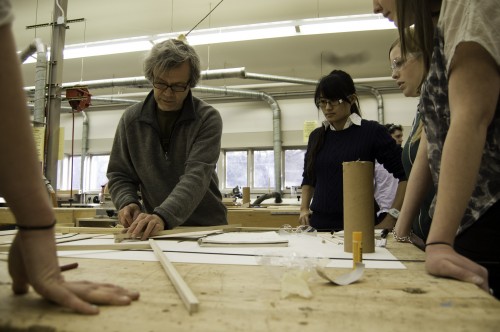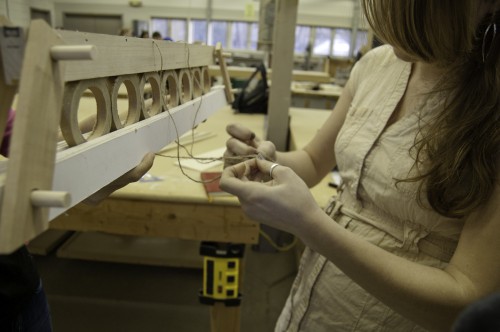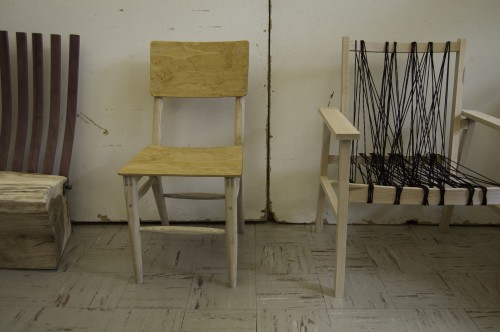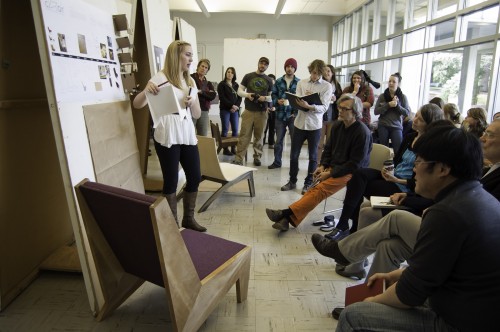The task sounds simple: design and build a chair. We sit in chairs all the time—how hard could it be? The reality, as 15 interior architecture students discovered, is far more complex. These students are in visiting professor Nils Ole Zib’s furniture design studio, where, according to Zib, “It’s probably the most difficult furniture to make.” Zib is the 2012 Margo Grant Walsh Professor in Interior Architecture.

Each student ended the term with a built prototype of a chair, but began the term studying and measuring existing chairs. They found that some famous chairs are uncomfortable, while other unassuming ones are excellent to sit in. Students then had to decide what type of chair they would design, and whom it was designed for. They couldn’t get too specific, as “you don’t have your name written on it, so it has to take some variability in size,” says Zib.
Zib required students to use wood to construct their chair, which dictated some of the forms and construction assemblies they could use. “The material allows you to do some things and restricts you from doing other things,” says Zib. Students were forced to ask, “What is wood able to do?” Students explored all types of wood, including standard pieces of wood, plywood, and press-formed veneer.
“There are limitations to wood and certain characteristics you have to design with and can’t avoid,” says Ellie Nonemacher, a graduate student in interior architecture. “Understanding wood down to its smallest element is key to a sound, structural chair.”
Zib, an independent furniture designer, product development consultant, and educator based in Denmark and Sweden, brought his own perspective on furniture to the studio. Zib sums up his philosophy as: “Get rid of all the extra stuff and scrape it down to the essential chair that you can actually sit in.” He asks students to justify their design decisions and always asks them ‘why’ to ensure they’re not adding something without good reason. Then at the end of the design process, students will add their own artistic touch and interpretation. “That makes a chair interesting.”
Now at the end of the studio, the class has an appreciation for the design of something as simple as a chair. “A chair can be one of the simplest forms of furniture, but it’s difficult to design,” says Nonemacher. “You also have to be willing to evolve with your chair and the material you have chosen.”


